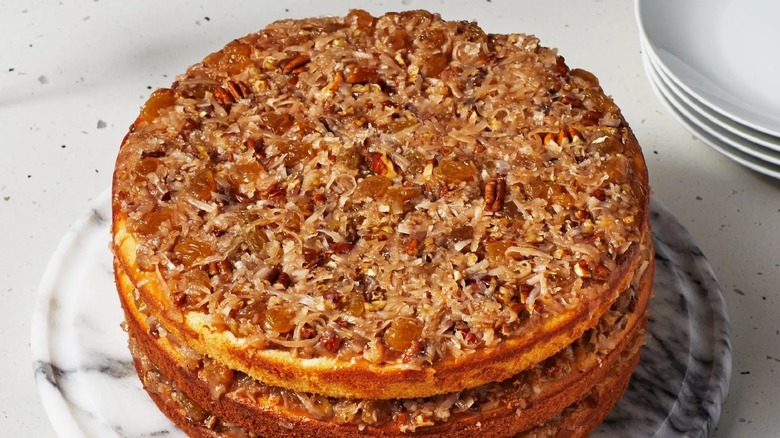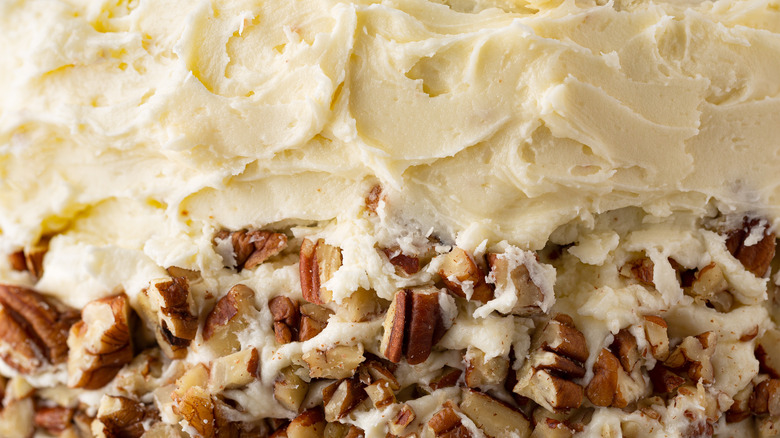The Literary Inspiration Behind Alabama's Official State Cake
The United States has a fun and quirky tradition of having state foods. Reader's Digest says that each state comes with a new culinary culture that deserves to be recognized and celebrated. Some states choose a veggie or a crop, while others pick a whole recipe! Although not all states participate in this practice, Alaska has laid claim to the giant king salmon, while California has the pistachio!
According to WBHM, the Alabama House of Representatives officially voted the southern "lane cake" in as Alabama's officially designated state cake. But the state cake is not just a delicious recipe, it is inspired by a literary classic that has deep roots in the south. Odds are, you've probably heard of "To Kill a Mockingbird." The novel was written by acclaimed author Harper Lee who also wrote the book "Go Set A Watchman." Lee's "To Kill a Mockingbird" set off a national conversation surrounding southern culture and identity and is now required reading for many high schoolers throughout the United States. The novel also introduced the lane cake throughout the South and beyond.
What is Lane Cake exactly?
So, what is lane cake exactly? According to The Take Out, lane cake is mentioned in Harper Lee's book as being filled with bourbon, pecans, and coconut-filled dishes that the character, Miss Maudie Atkinson, bakes. The book references a real-life lane cake reportedly made by a woman named Emma Rylander Lane in Clayton, Alabama. However, it was the novel that made the lane cake rise to fame throughout the South. When Harper Lee's next book "Go Set a Watchmen" was published in 2015 the interest in the dish was revived.
Tori Avey describes the lane cakes as boozy. It is made with three to four layers of vanilla butter cake, custard, and a bourbon-saturated raisin filling. The recipe was first published in an 1898 cookbook, "A Few Good Things to Eat" under the name "Prize Cake" and the dessert became a regional recipe in Georgia, Alabama, and Mississippi. Over the years, ingredients have been adjusted, added, or dropped but the concept lives on and the use of American bourbon remains consistent.

